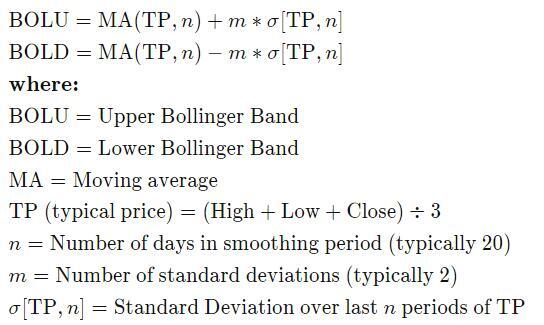
On the income statement, the $50k is recognized as revenue per accrual accounting policies but recorded as accounts receivable too since the payment has not yet been received. On the other hand, if a company’s A/R balance declines, the invoices billed to customers that paid on credit were completed and the money was received in cash. Accounts Receivable (A/R) is defined as payments owed to a company by its customers for products and/or services already delivered to them – i.e. an “IOU” from customers who paid on credit. Another important note to make is that sometimes companies will attach discounts to their account receivable accounts to incentivize the borrower to pay back the amount earlier. The discounts benefit both parties because the borrower receives their discount while the company receives their cash repayment sooner, as companies require cash for their operating activities. Accounts receivable is a current asset account that keeps track of money that third parties owe to you.
Thus, bigger the difference between Gross Receivables and Net Receivables, bigger the issue with your business’ trade credit and collection policy. Thus, Net Accounts Receivable are used to measure the effectiveness of your business’ collection process from customers to whom goods are sold on credit. Net Credit Sales include the value of goods sold on credit what is unearned revenue what does it show in accounting for which payment is received at a later date. Accounts receivable turnover measures how efficiently your business collects revenues from customers to whom goods are sold on credit. Now, let’s have a look at the differences between accounts receivable and accounts payable. In other words, you provide goods and services to your customers instantly.
How to Record Accounts Payable
For example, if you’ve received goods from your supplier but are yet to pay, this amount falls under payables for you and receivables for the supplier. All of these count as receivables as the cost to the customer is due after they have already received the goods or services. Accounts receivable is the amount due to a business for goods and services already delivered to a customer but not paid for. Using the same assumptions as the prior section, the journal entry to reflect the purchase made on credit is as follows. Suppose an electronic components supplier received an order from a manufacturer.
Cantaloupe, Inc. Reports Fourth Quarter and Fiscal Year 2023 … – InvestorsObserver
Cantaloupe, Inc. Reports Fourth Quarter and Fiscal Year 2023 ….
Posted: Wed, 06 Sep 2023 20:07:00 GMT [source]
Failure to do so will negatively affect the cash flow available for other business needs. When a business has a claim against a customer for a short-term extension of credit, they create a receivable entry in its accounting system and send an invoice to the client to request payment. Thus, the Bad Debts Expense Account gets debited and the Allowance for Doubtful Accounts gets credited whenever you provide for bad debts. Therefore, it is important that you manage your accounts receivable carefully. Accounts payable is money your company owes to vendors and suppliers—and are often referred to as liabilities. Accounts payable is ideal for keeping track of expenses and money owed to suppliers for essential business processes.
Cash Forecasting Software
It is up to the individual whether or not they wish to include the terms of the transaction. In business transactions, companies will often purchase items on account (not for cash). The term used to call the transactions is purchases “on account,” which signifies a transaction where cash is not involved. The final step to managing accounts receivable is to write everything down.

A seller may find that its customers cannot pay their receivable balances when due, in which case an option is to convert these receivables into notes receivable. In a notes receivable arrangement, the customer agrees to a specific repayment schedule, typically with an interest charge added on. If the terms of the agreement allow for it, a note receivable may allow the seller to attach the assets of the customer and gain payment by selling the assets. Expanding the amount of credit offered to customers can mean that a firm’s bad debts increase. This is especially likely when a firm maintains a loose credit policy during an economic downturn, when customers may struggle to pay their bills. In addition, having more receivables increases the working capital requirements of a business, which may call for additional funding to keep it solvent.
How Ramp helped Barry’s save 400 hours/month on expense report headaches
Average accounts receivable is the (beginning balance + ending balance)/2. Accounts receivable is the dollar amount of credit sales that are not collected in cash. When you sell on credit, you give the customer an invoice and don’t collect cash at the point of sale.

Accounts payable (AP) and accounts receivable (AR) are two sides of the same coin. The balance sheet provides a snapshot of where a company stands financially. A simple summary of the information found there gives you an overall view of how much money your company owes and how much cash it has on hand.But the accounting equation isn’t just about numbers. So, while you might think of AP as being a “cost center,” it’s actually a source of revenue. And similarly, AR is a source of income.So, don’t see either side as a drain on resources.
Importance of accounts receivables
When you compare accounts receivable and payable, you are looking at how much cash flow each one provides based on what is owed to it. You want to make sure that you aren’t overpaying for something because you’re paying too little attention to the other side of the balance sheet. Here are some things to keep in mind when comparing accounts receivable and payable. The accrual basis of accounting records expenses immediately upon incurring them. This method requires businesses to report expenses as soon as possible, even if payment isn’t due for several months. However, the cash basis of accounting records expenses when the related invoices are paid.
- The receivable account, on the other hand, represents amounts your business is owed.
- You can transfer it to collections, where a collector will try to connect with the customer and work with them to collect the payment.
- For example, once a company chooses a supplier, it’ll send an official purchase order, terms and conditions and set a date for delivery.
- Some small and mid-sized businesses (SMBs) also have what’s called an “accounts payable” department, which is responsible for making payments.
AR metrics and KPIs are the quantitative measures you can use to evaluate the efficiency of your AR processes and assess your broader business process landscape. If you subtract liabilities from assets and the result is positive, your business is profitable. Receivables cannot be negative, but net working capital can, if liabilities are greater than assets and growing at a constant rate along with assets.
This is an especially useful tactic when a competitor decides to reduce the amount of credit offered, so that a firm offering more credit is in a good position to attract them. Only keep offering credit to customers who meet their payments on time. Starting from Year 0, the accounts receivable balance expands from $50 million to $94 million in Year 5, as captured in our roll-forward.
A business is optimizing its use of accounts receivable when selling one additional dollar of goods or services on credit will not longer generate any additional profit. This has different implications, depending on the profit margins being generated. When products generate substantial profits, then it makes sense to offer credit to most customers, because the profits are so large that they exceed the amount of bad debts. Conversely, when the profit per unit is quite low, a business cannot afford to have many bad debts, so it is extremely careful in extending credit to customers, resulting in very low accounts receivable. When an invoice is issued to a customer, the seller debits the accounts receivable account (an asset account) and credits the sales account (a revenue account).
Accounts receivable vs. accounts payable: What’s the difference?
When the expense is approved by the authorized employee, a check is cut (digital or hard copy) based on the terms of the purchase agreement. Accounts receivable refers to money due to a seller from buyers who have not yet paid for their purchases. The amounts owed are stated on invoices that are issued to buyers by the seller. The issuance https://online-accounting.net/ of an invoice implies that the seller has granted credit to a customer. Credit limits may be reduced during difficult financial conditions when the seller cannot afford to incur excessive bad debt losses. Accounts payable and accounts receivable are inherently linked functions within a company’s financial accounting system.